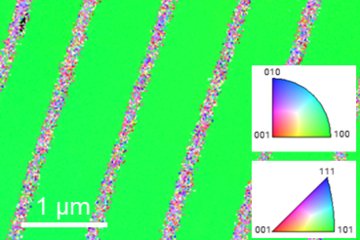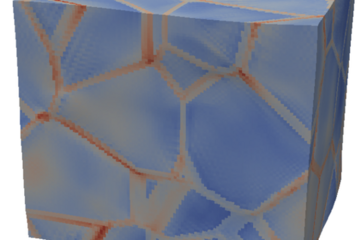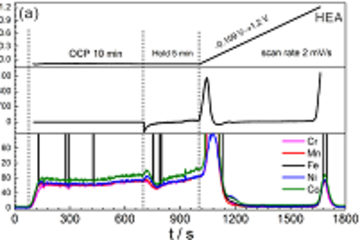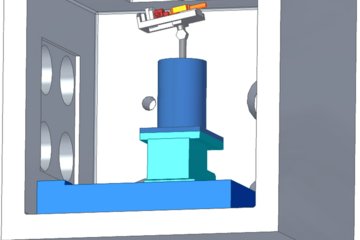All genres
61.
Talk
Nanostructuring of 1 Mio tons: Designing ultrastrong and ductile steels. DPG meeting (Deutsche Physikalische Gesellschaft), Berlin, Germany (2012)
62.
Talk
Partitioning and austenite reversion at martensite-austenite interfaces in Mn-steels. TMS 2012 Annual Meeting, Orlando, FL, USA (2012)
63.
Talk
Alloy design of nanoprecipitate-hardened high-Mn maraging-TRIP and -TWIP steels. 1st International Conference on High Manganese Steels 2011, Seoul, South Korea (2011)
64.
Talk
Diffusion and Phase Transformation in Multi-Component Systems. 9-th Seminar Diffusion and Thermodynamics of Materials, Brno / Czech Rep. (2006)
65.
Talk
Simulation of the kinetics of precipitation reactions in ferritic steels. TMS Annual meeting 2005, Symposium 'Computional thermodynamics and phase transformations', San Francisco, CA, USA (2006)
66.
Talk
Carburisation of diffusion couples. Calphad XXXIV Conference, Maastricht, Netherlands (2005)
67.
Talk
CVM calculations in the bcc Fe–Rh–Ti system. Calphad XXXIV – International Conference on Phase Diagram Calculations and Associated Subjects, Maastricht, The Netherlands (2005)
68.
Talk
How far do we get with the local equilibrium hypothesis? Symposium: Thermodynamics and kinetics of migrating interfaces in steels and complex alloys, Stockholm, Sweden (2004)
69.
Talk
Computerberechnung von Phasengleichgewichten und Umwandlungen – Instrument für Legierungs- und Wärmebehandlungsoptimierung. Numerische Simulation, Verarbeitungsprozesse und prozessgerechte Bauteilgestaltung, Bayreuth, Germany (2004)
70.
Talk
Design of ferritic/martensitic heat resistant 650 °C steels supported by thermodynamic modelling. DGM, Werkstoffwoche 2004, München, Germany (2004)
71.
Talk
Experimental study and thermodynamic modelling of the Fe-Ta equilibrium phase diagram. TOFA, Discussion Meeting on Thermodynamics of Alloys, Wien, Austria (2004)
72.
Talk
Simulation of precipitation reactions in multi-component systems. Colloquium: Institute of Physics of Materials, Academy of Sciences of the Czech Republic, Brno, CZ (2004)
73.
Talk
DICTRA: Von der Idee zur Anwendung. THERMOCALC - Anwendertreffen, ACCESS Aachen, Germany (2004)
74.
Talk
The modelling of important intermetallic phases, existing in Fe-based systems by the combined CALPHAD and ab-initio approach. CALPHAD XXXIII, Krakow, Poland (2004)
75.
Talk
DICTRA simulation of precipitation reactions in ferritic steels. CALPHAD XXXIII, Krakow, Poland (2004)
76.
Talk
Cementite Decomposition in High Carburizing Atmospheres. Colloquium: Div. Physical Metallurgy, Royal Institute of Technolgy, Stockholm, Sweden (2004)
77.
Talk
Thermodynamics and kinetics of phase transformations during metal dusting of iron and iron-based alloys. CALPHAD XXXIII, Krakow, Poland (2004)
78.
Talk
Simulation of Diffusion Controlled Transformations in Multicomponent Systems. DECHEMA Workshop on Diffusion Modelling, Frankfurt, Germany (2003)
79.
Talk
Interfacial Condition at the Moving Interfaces during Steady and Non-Steady State Growth of Ferrite from Austenite in Fe-C-X Alloys. Symposium on Mechanical Working and Steel Processing Conference, TMS Meeting Materials Science & Technology, Chicago, USA (2003)
80.
Talk
Simulation of precipitation in multicomponent systems. Colloque Précipitation, Autrans, France (2003)











